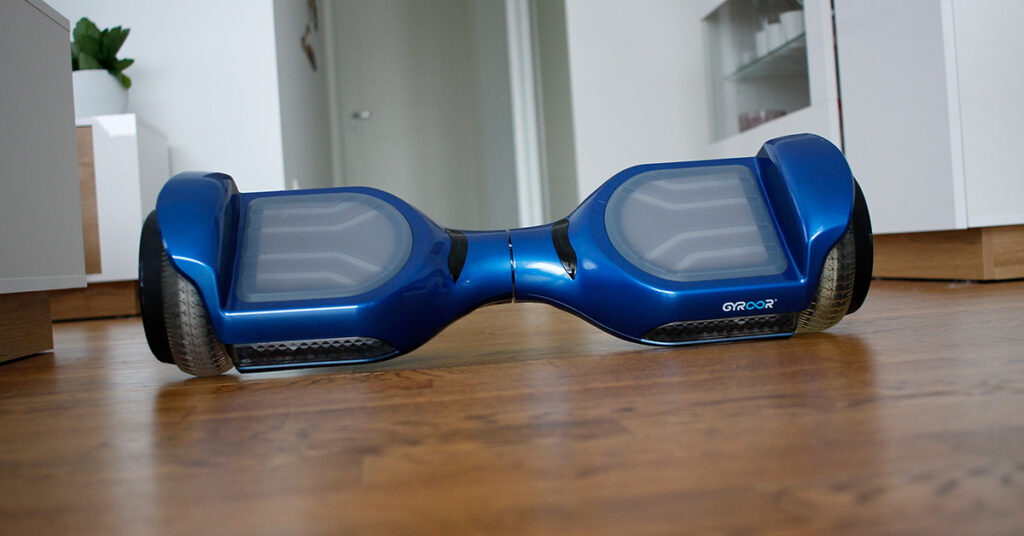Electric Wheelers is reader-supported. Although we independently research and test products, we may receive a commission on purchases made from our chosen links. Read more…
Hoverboards became globally popular in 2015 when they became known as a healthier, cooler, and more eco-friendly way to get from point A to B. Now there are different types of hoverboards to choose from.
In time, they massively improved in design and technology. In response to their increasing demand, tech and transport companies created a variety of hoverboards with special designs.
The varieties that stuck became the basic types of hoverboards. Improvements to the wheelbase saw some models become off-road, faster, and safer.
Some motor tweaks gave them the power to climb inclines, while other tweaks increased their top speed, battery efficiency, and range. Eventually, hoverboards became a vital mode of urban transportation.
Since the first one was invented in 2013, there have been multiple improvements to its original design. Today, changes and adaptations have created the following types of hoverboards.
Two Wheel Hoverboard
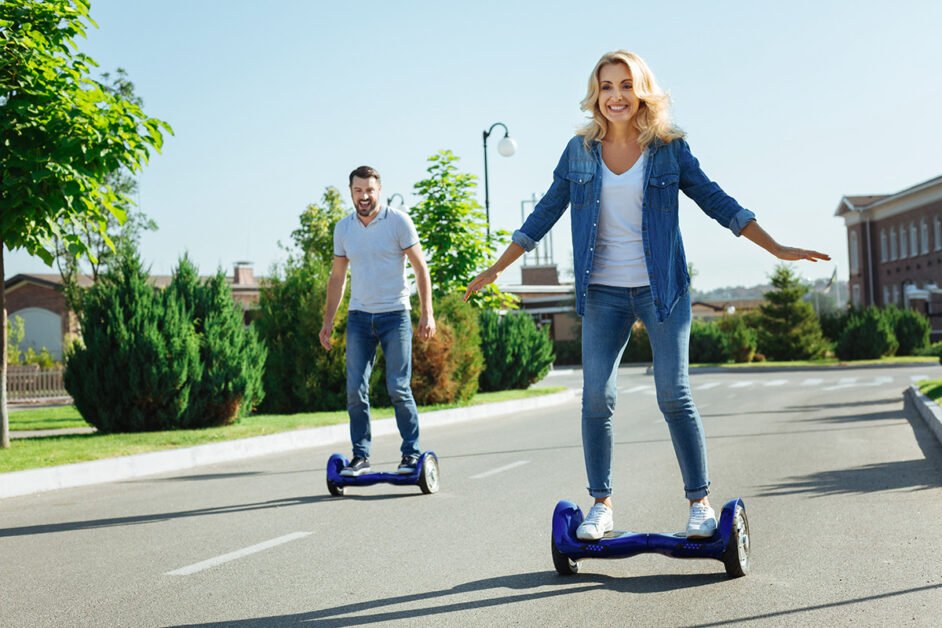
If you go online and type in ‘hoverboard‘, this is the most likely result to pop up. The two-wheel hoverboard is the blueprint of the technology. Nearly all hoverboards have this configuration, which is essentially two motorized wheels connected to a board with foot sensors.
The rider leans in any direction to control the hoverboard. The further you lean in one direction, the faster you move. Manufacturers took this, the most stable design, and added numerous modifications to improve its capabilities. As a result, two-wheel hoverboards have become more specialized, with each of them designed for specific terrain or purposes.
Related: Best-Selling Hoverboards on Amazon
Two-wheel hoverboards largely exist in the following categories:
10-Inch Hoverboard
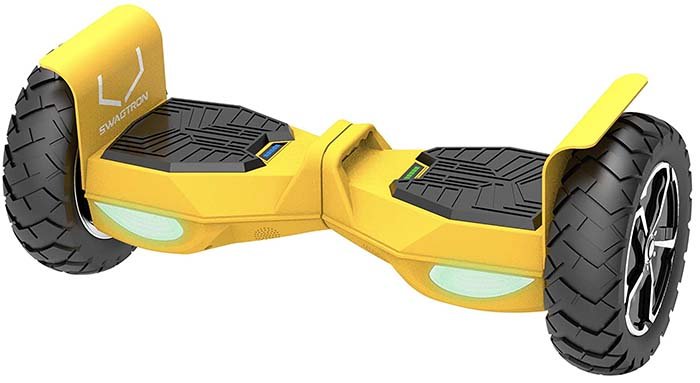
These are the fastest types of hoverboards. The larger wheels keep traction better at higher speeds, making 10-inch hoverboards generally more adept at speed.
A hoverboard with 10-inch wheels is also what you want for off-road trips. Earlier hoverboards were designed for urban terrain, but nowadays, hoverboards can go anywhere. The wheels are now adequate for tackling wet and muddy surfaces too.
As an adult, the 10-inch hoverboard is your safest bet if you’re looking for something that can optimally support your weight. Bigger hoverboards also have bigger batteries, which means they have a much better range. It is enough to make them ideal for long-distance commuting.
As they tend to feature expensive components, 10-inch hoverboards are usually pricey and hard to come by, often reserved for specialists like wildlife camera crews.
Popular Models:
8-Inch Hoverboard
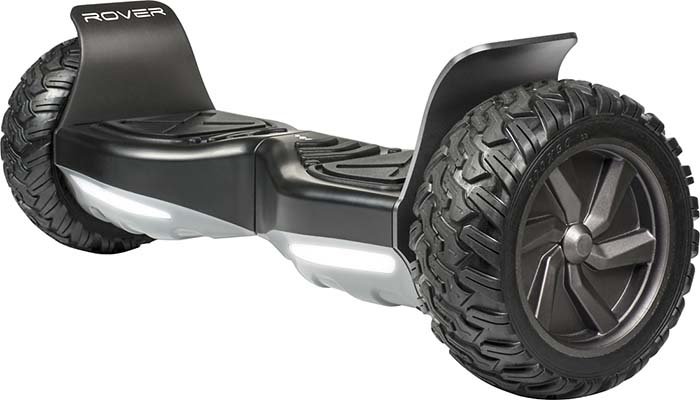
Today, most manufacturers make hoverboards with wheel sizes ranging from 8 – 8.5 inches. This type of hoverboard offers a balanced mix of speed and versatility. Furthermore, it is easier to obtain and less expensive than a 10-inch hoverboard.
Hoverboards in this category are all-terrain vehicles, which means they’re suitable for all types of environments. Standard features include Bluetooth speakers, LED lights, and mobile app connectivity.
Modern hoverboards are also fitted with safer batteries and self-balancing technology. Variations in the wheel size and type allow users to lean towards rougher terrains at the cost of speed or smoother terrains with improved range.
More importantly, these types of hoverboards are affordable and suitable for both kids and adults.
Popular Models:
6-Inch Hoverboard

The best hoverboards for kids are 6 – 6.5-inch models. They’re cheaper, lighter (and therefore easy to maneuver), and much safer compared to the 8 – 10-inch models.
This type of hoverboard usually manages a top speed of 6 – 7 MPH. Its maximum range is accordingly short, which makes it great for making short-distance runs and performing tricks.
For a child that’s learning the hoverboard, this is likely the best option, especially for their size, weight, and cost.
Popular Models:
4.5-Inch Hoverboard
Even toddlers can hoverboard these days. All you need is a small enough model, and the smallest you can get is 4.5 inches.
This type is strictly for younger children, especially since it doesn’t support a lot of weight (usually not more than 150 lbs.). It’s more of a learning tool for beginners than a hoverboard for daily use.
Popular Models:
One Wheel Hoverboard
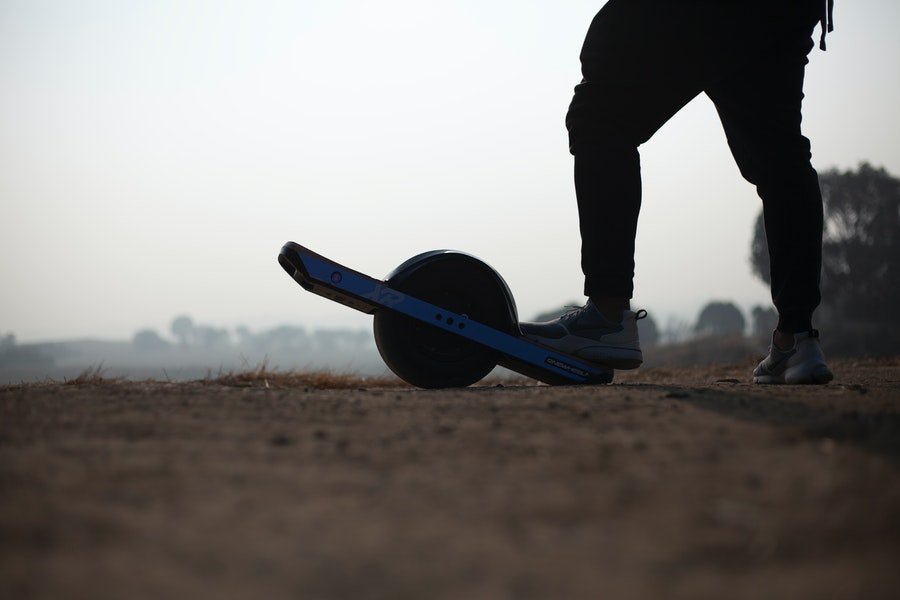
The latest leap in hoverboard technology is certainly the adoption of the single-wheel design. Whereas a two-wheeled hoverboard is referred to as a self-balancing bike, a one-wheel hoverboard is a self-adjusting individual carrier that looks like a futuristic skateboard.
The wheel is at the center of the board and parallel to it as well. Unlike on a traditional hoverboard, you stand across the board with one foot in front of the other.
Related: Can You Take a Hoverboard On a Plane?
One-wheel hoverboards have significant advantages, among them being speed, agility, and faster braking. They can be faster and have more range than dual-wheel hoverboards as all the power transmits to one wheel.
Are they easier to control? Not necessarily. Two-wheeled scooters offer better balance and are therefore better for beginners. But for someone who can comfortably ride a skateboard, one-wheel hoverboards may feel familiar and more fun to control.
Popular Models:
2-Wheel Hoverboard vs Single Wheel Hoverboard
Balance
Two-wheel hoverboards are easier to balance on. They’re also self-adjusting, which means a gyroscope mechanism tilts the footpad away from the direction of travel to increase control and stability.
Single-wheel hoverboards are much harder to learn because your focus is torn between balancing and applying pressure to move.
Size
Single-wheel hoverboards are smaller and lighter despite having larger wheels than typical two-wheelers.
That makes them more akin to a traditional skateboard than a scooter, thereby more convenient for urban movement.
Two-wheel hoverboards measuring 8 – 10 inches are much heavier and won’t be so easy to carry around if you’re using public transport as well.
Terrain
By design, most single-wheel hoverboards are all-terrain vehicles. Manufacturers focus on making the one wheel as powerful and as functional as possible, making these types of hoverboards better for riding on grass, gravel, and rocky terrain.
Two-wheel hoverboards also have off-road variants that are quite capable. But these are usually expensive, not to mention quite heavy. In comparison, you’d get the same off-road ability from a mid-range one-wheeler.
Control
It’s harder to master a single-wheel hoverboard, but you get more functionality out of it once you understand the basics. They’re better at corners, faster at stopping, and built for all sorts of tricks you can pull off in various environments.
You’ll learn a two-wheeled hoverboard faster, but eventually, your control will be limited to the design of the board, something that could be a problem if you’re more interested in the thrill of riding on a hoverboard.
Hoverboard with Handle

When you start pairing hoverboards with handles, you begin to venture into Segway territory. Although most hoverboards don’t have that feature, you can equip a hoverboard with a handle attachment or even get one of the few that are specially made for comfortable riding.
Most of the time, the handle is just for balance. All the control comes from your feet like on any other hoverboard. A handle can be a great accessory, as can be an attachment that turns the hoverboard into an electric cart with space for a small amount of cargo.
4-Wheel Hoverboard
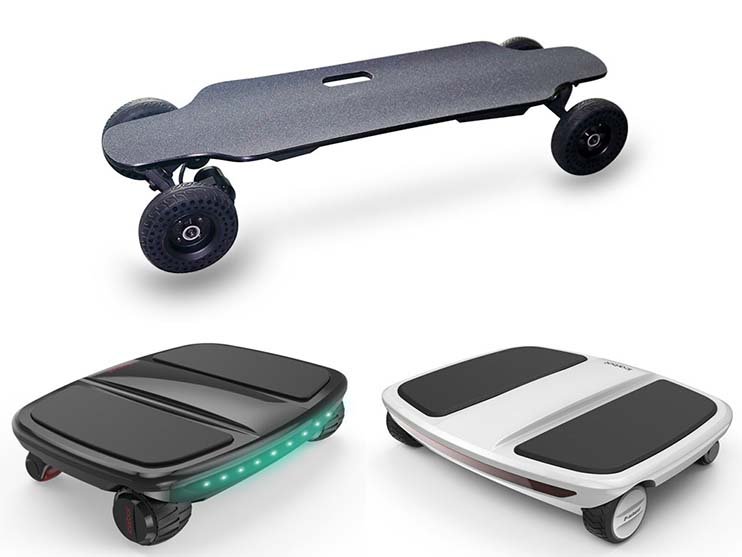
Although still not mainstream, it’s possible that the future of hoverboards is leaning towards a four-wheel design. Perks like improved balance, better power efficiency, and bigger batteries may lure the older generations towards four-wheel hoverboards instead of walkers.
iCarbot first took a crack at making the world’s first four-wheeler in 2016. The model boasted better stability and was, therefore, safer to use around the house.
Four-wheel hoverboards are yet to catch on as expected, but that could change any time soon. They have safety benefits that all the other types lack.
The only problem is that they can feel a little boring. You’d get a more exhilarating ride from a four-wheeled electric board if you go for the electric longboard.
Electric Longboard

This is a cross between the traditional four-wheel longboard and a hoverboard. You can gain speed the old-fashioned way (shifting your weight to generate forward motion) or through a wireless, handheld throttle.
On average, electric longboards can travel as fast as 18 – 29 MPH. You can also call them more power-efficient since you don’t always need to engage the motor to pick up speed.
The main reason to get an electric longboard is to practice tricks or travel very fast over short distances. It’s much lighter than any hoverboard and better suited for navigating urban jungles.
Which is the Easiest Hoverboard to Ride?
The two-wheeled hoverboard is more forgiving for beginners because of its self-balancing design. It’s easier to master since the controls are straightforward: apply pressure to move in whichever direction you please.
Furthermore, you can attach an upright handle to keep you more balanced while you move. The single-wheel and longboard-type hoverboards require you to balance and control the board on the fly, making them much harder to ride. With practice, nevertheless, you can get good at it.
What Type of Hoverboard Should I Buy?
For Practice
Any two-wheeled hoverboard measuring 6.5 – 8.5 inches is good enough to learn the skill. These are easier to balance on and master the simple controls. They’re also safer since they use a gyroscope to keep the platform level at all times.
For Commuting
If you need a serious mode of transportation, perhaps around campus or from your apartment to the office, consider nothing less than a 10-inch hoverboard.
The larger wheels ride over everything, so you’re going to move along different terrains with speed and ease. Bigger wheels mean larger batteries, and the longer you can ride without running out of power, the more convenient your trips will be.
Splurge on a durable build and all-terrain tires if you intend to explore trails on your trusty board in your free time.
For Skills and Competition
Hoverboards are just as cool as skateboards were back then, and in some places, you’ll find breathtaking performances involving these electric marvels.
Tricks can be performed on two-wheeled hoverboards, but for that extra flashiness and swag, a one-wheeler would be the wise purchase if you’re going for agility and speed. They’re better at taking corners and infinitely better at performing quick skills.
They’re also faster and can stop on a dime, not to mention they always have better mobility over all types of surfaces.
Conclusion
Hoverboards are revolutionizing almost every aspect of human movement. In the urban environment, they’re an attractive alternative to cars, which cause massive amounts of pollution and traffic jams.
Getting around on a hoverboard is still a statement, but for some, it is all about convenience. They can maneuver around tight spaces just like our feet, but when it comes to speed, they perform like bikes that require much less physical energy to move.
If you’re thinking about buying a hoverboard, the most important consideration is your intended use. Whether you want to commute, perform sick tricks, or improve your craft (such as filmmaking), there is a hoverboard that will satisfy your needs.
A freelance writer and copywriter.




